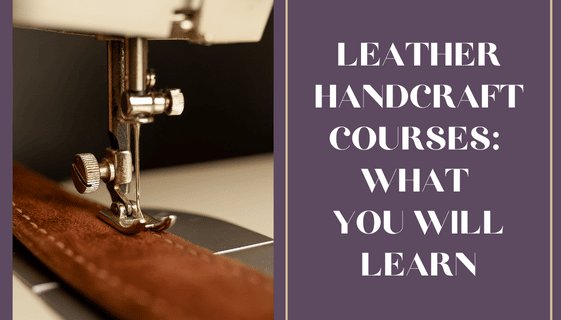Working with leather is one of the oldest crafts in the world that Tuscan artisans manage to make more alive and relevant than ever with their own hands. In our workshop, designers make custom leather goods and give new life to antique pieces, with the aim of enhancing the quality of the raw material and finishing it with a handcrafted touch. In this article, I’ll briefly explain what they teach in leather goods schools by revealing the secrets of leather and its workmanship.

Here are some fundamentals in the art of leather goods
The raw material
In any self-respecting course you cannot fail to dedicate the right amount of importance to leather. How the leather passes from the raw material to the final product, the differences between the various leathers and how to distinguish the good from the bad. The first phase of tanning consists in detaching the hide from the animal carcass, mechanically or manually. The skin then undergoes salting and drying, to preserve it from external bacteria. This is followed by the actual tanning process to transform the leather into hide.It is essential to know how to recognize a real product from a fake one and we at Florence Leather Market have an article dedicated to that too.
The craftsman’s tools
There are many tools to use in the field of leather goods, but we can divide them according to their functionality; we have tools dedicated to modelling, cutting and preparation, assembly and packaging, shaping, colouring and fastening and finally equipment dedicated to quality control. In the search towards the art of leather goods, it is of fundamental importance to master the use of different equipment and therefore, it is important to rely on masters who can facilitate our learning. Once you have mastered the various tools of the trade, you can begin to assemble your first product for your portfolio.
Here are the phases of leather processing
First you need to have in mind what you want to create and then have a drawing to follow with the various measures and the various notes that will help you throughout the process. Then you proceed with the various working processes.
cutting and sharpening of the leather
We start with the cutting and sharpening of the leather, preparing a cardboard template, which reflects the piece of leather you want to cut. Tracing the contours with a pencil on the straight side of the leather, we follow the track with the awl pressing lightly to create a thin but deep enough incision and through the use of a coramella we finish the cut.
- Bonding: after having cut out our leather parts necessary for the assembly we can move on to gluing.To glue the leather you can use the classic vinyl glue and all the cyanoacrylate glues, even if the most effective glues for yield and durability are the contact glues.
- Stitching: once the gluing phase is over, let’s move on to stitching. A centuries-old technique still practiced today by luxury brands is the traditional saddle stitch, it is therefore important that a course goes through the most important steps, from the selection of the thread, the calculation of the length, the preparation of the leather up to the actual sewing.
- Edge processing: finally we move on to edge working, sealing all the glued and sewn layers of leather requires a few steps in the right sequence so that the edge is not only aesthetically smooth but also lasts for a long time.
If you are interested in the world of leather in our opinion these are the fundamental steps you should focus on to aspire to become a real leather master. Take a look at our website to see how Florence Leather Market uses modern style craftsmanship techniques.





